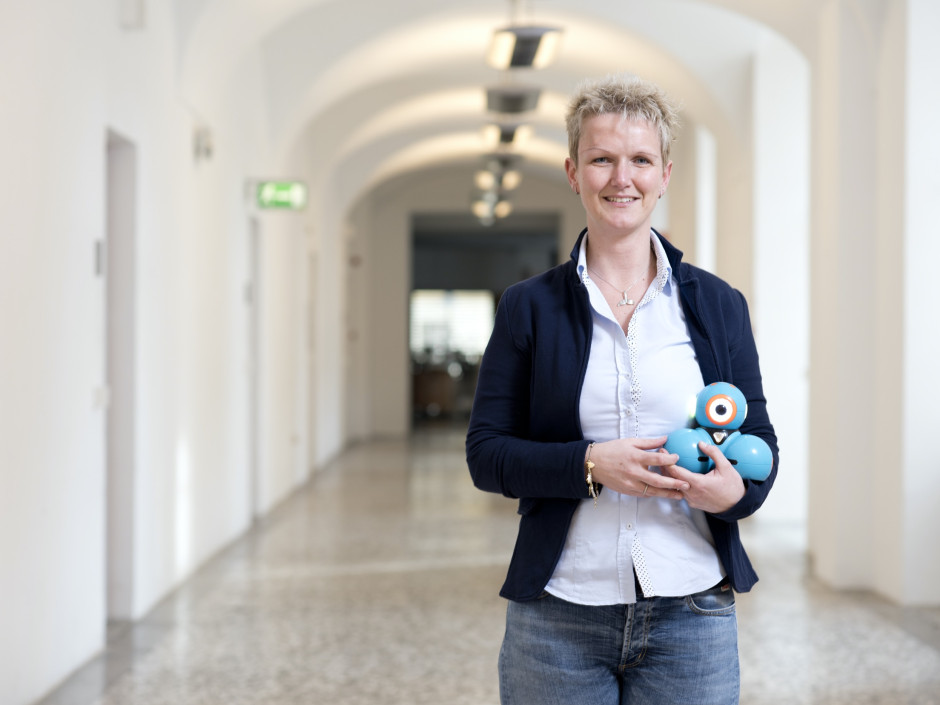"Leaving languages out of technological projects is short-sighted"
Ilenia Fronza has been a researcher in the Software Engineering field (SwSE research group) at the Faculty of Computer Science at unibz since 2011 and her research interests include Software Engineering Training and Education. Her recent paper ‘Towards Mobile Assisted Language Learning Based on Computational Thinking’ with Daniel Gallo, was recently shortlisted for the Best Paper Award at ICWL - the International Conference on Web-based Learning.
How did the idea for the paper come?
It came about through my learning of German at unibz but is currently applied to schools. In schools, there is an increasing need to teach the fundamental aspects of computer science to students, including aspects related to computational thinking and how to think and solve problems. These aspects have traditionally been tackled in the “STEM” subjects (Science, Technology, Engineering, and Mathematics) and other subjects have been excluded due to concerns about the ability of teachers in humanities subjects to deal with these specific areas. However, nowadays computers and their use are so pervasive, it doesn’t make any sense excluding these subjects so I decided to see how we can learn German and computational thinking at the same time.
Could you give us more details about how you went about this?
Well, as I mentioned before, it came about because I was following a German-language course at the Language Centre and I had a real problem – how do you identify the grammatical gender of a noun in German? What makes a noun masculine, feminine or neuter in German? For me, it seemed completely random and I was really struggling. My German teacher at the time said exercises could be created to help with this aspect as it isn’t random at all and there are logical reasons why one noun is one gender and another is a different gender. So I started to develop a system that helps learners work out the gender of each noun and it is based on a scoring system which not only gives points for getting the gender right but also points for the logical reasoning behind the solution.
So how does this work in practice?
So basically I have developed an app that works on tablets. This app provides exercises for learners to practice allotting the gender to nouns but there is also a whole grammar input part that they can consult while doing the exercises. Moreover, the app collects data on how often each learner checks the rules while working out the solutions, which the teacher has access to so that they can give focused feedback to each individual learner. The app also compares each individual student’s progress with that of the rest of the class, which gives the whole process that competitive element that can work so well with students. However, the data can also be anonymous, so the teacher can’t identify each student but can receive results from the whole class to monitor a class’s progress.
Have you started using it in class?
Yes, we have already run trials at a school in Bolzano and are currently doing further trials with another two groups, one using the app and one on paper to compare the results and assess the functionality of the app. Our trails so far have focused on assigning grammatical gender to nouns, and it has worked very well with the learners. They work through the exercise, going through the logical steps to assign the gender and submit a solution. Then they can confer with their partner and if they decide to change their answer based on their partner’s answer, they can do this, so the exercise also offers a valuable opportunity for peer correction. Because the learners are at an A2 level of German, they have to work through the exercises mechanically and properly think about each step as their level doesn’t allow them to work intuitively yet. So far, it has worked really well because – as my German teacher reminded me – the use of gender in German isn’t random so a clear logical system is in place. But using this app means that students don’t have to learn everything by heart; they use this logical system to work out the answer step by step, which, of course, will stand them in good stead for their future German language learning. In fact we want to develop the app so that it encompasses lots of other grammatical aspects of German, like plural forms and cases.
And have you found it useful for your German?
Yes, absolutely. The idea of this app actually came about primarily because I was having trouble with German grammatical gender but also because my German teacher, Daniel Gallo, wanted to be more involved in technological projects. As I mentioned before, languages tend to be left out of technological projects like this, but that is very short-sighted. Many people who are good at mathematics are good language learners because similar skills are required: you need to be able to reason logically and notice patterns if you want to do well in maths and languages, so this approach aims to bring together these two aspects to help with German. I must admit it has really allowed me to get to grips with grammatical gender in German.
You said you want to extend the app. What other future opportunities do you see with this app?
Apart from extending it for other aspects of German grammar, we’re interested in running more trials with many more people to make the trials more robust. We also want to look at other variables, such as the participants’ proficiency in English, as we feel this will have an impact. Moreover, all the data we are collecting will be extremely useful for any studies on learning German here in South Tyrol.
Related Articles
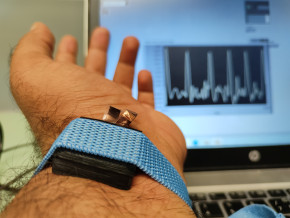
Tecno-prodotti. Creati nuovi sensori triboelettrici nel laboratorio di sensoristica al NOI Techpark
I wearable sono dispositivi ormai imprescindibili nel settore sanitario e sportivo: un mercato in crescita a livello globale che ha bisogno di fonti di energia alternative e sensori affidabili, economici e sostenibili. Il laboratorio Sensing Technologies Lab della Libera Università di Bolzano (unibz) al Parco Tecnologico NOI Techpark ha realizzato un prototipo di dispositivo indossabile autoalimentato che soddisfa tutti questi requisiti. Un progetto nato grazie alla collaborazione con il Center for Sensing Solutions di Eurac Research e l’Advanced Technology Institute dell’Università del Surrey.
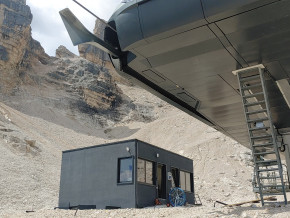
unibz forscht an technologischen Lösungen zur Erhaltung des Permafrostes in den Dolomiten
Wie kann brüchig gewordener Boden in den Dolomiten gekühlt und damit gesichert werden? Am Samstag, den 9. September fand in Cortina d'Ampezzo an der Bergstation der Sesselbahn Pian Ra Valles Bus Tofana die Präsentation des Projekts „Rescue Permafrost " statt. Ein Projekt, das in Zusammenarbeit mit Fachleuten für nachhaltiges Design, darunter einem Forschungsteam für Umweltphysik der unibz, entwickelt wurde. Das gemeinsame Ziel: das gefährliche Auftauen des Permafrosts zu verhindern, ein Phänomen, das aufgrund des globalen Klimawandels immer öfter auftritt. Die Freie Universität Bozen hat nun im Rahmen des Forschungsprojekts eine erste dynamische Analyse der Auswirkungen einer technologischen Lösung zur Kühlung der Bodentemperatur durchgeführt.
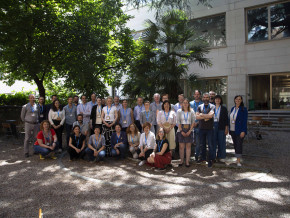
Gesunde Böden dank Partizipation der Bevölkerung: unibz koordiniert Citizen-Science-Projekt ECHO
Die Citizen-Science-Initiative „ECHO - Engaging Citizens in soil science: the road to Healthier Soils" zielt darauf ab, das Wissen und das Bewusstsein der EU-Bürger:innen für die Bodengesundheit über deren aktive Einbeziehung in das Projekt zu verbessern. Mit 16 Teilnehmern aus ganz Europa - 10 führenden Universitäten und Forschungszentren, 4 KMU und 2 Stiftungen - wird ECHO 16.500 Standorte in verschiedenen klimatischen und biogeografischen Regionen bewerten, um seine ehrgeizigen Ziele zu erreichen.
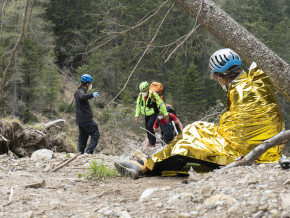
Erstversorgung: Drohnen machen den Unterschied
Die Ergebnisse einer Studie von Eurac Research und der Bergrettung Südtirol liegen vor.
